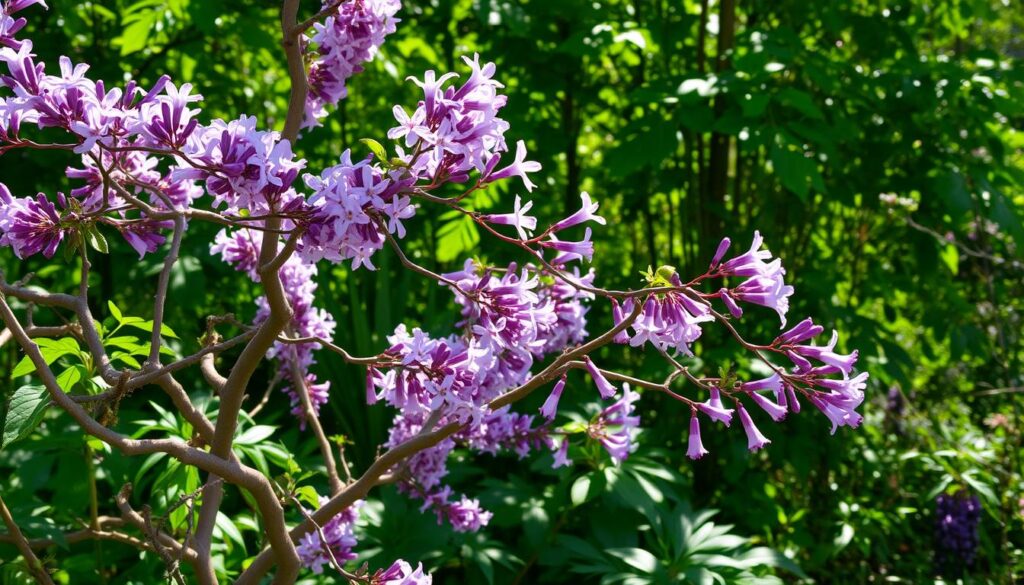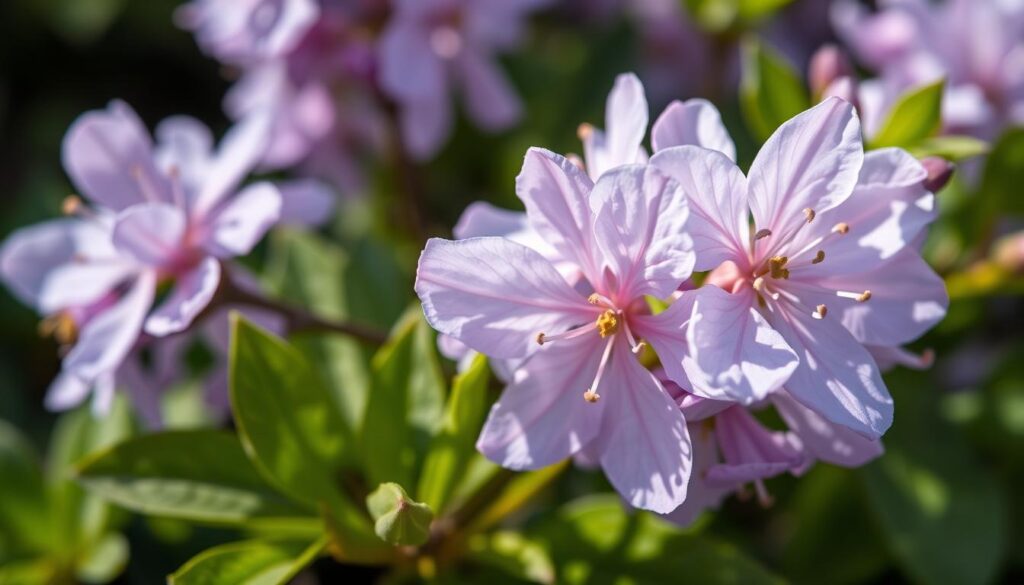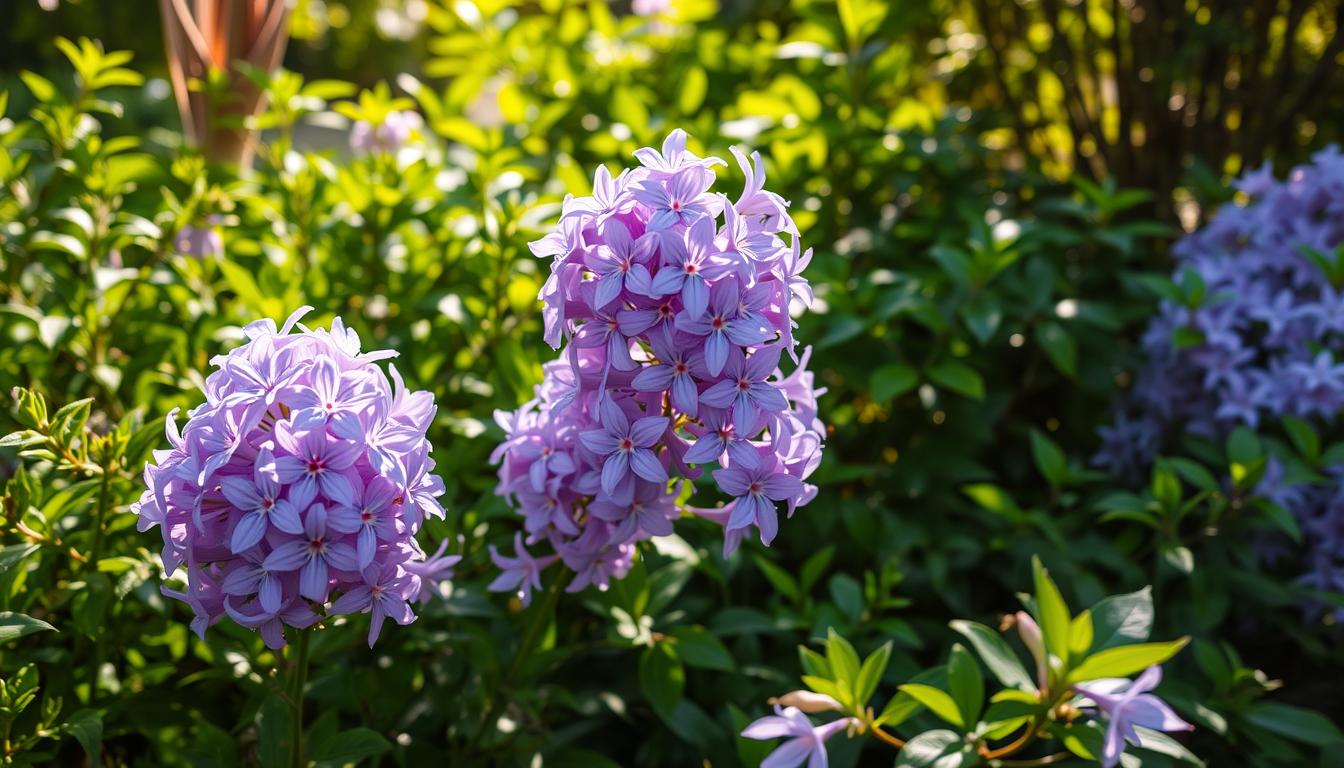Have you ever heard of the “lilac witch hazel”? This plant is native to the Eastern United States. It has a rich history and many uses that have amazed people for centuries. Its fragrant blooms in winter and vibrant fall colors make it a garden gem.
But what’s so special about this plant? Why should you add it to your garden? Let’s explore.
Key Takeaways
- The lilac witch hazel is a captivating and versatile shrub with a rich history and a wide range of uses.
- It boasts fragrant, spidery blooms in the winter and vibrant fall foliage, making it a standout in any garden.
- This hardy, deer-resistant plant thrives in a variety of soil types, making it an excellent choice for low-maintenance landscaping and woodland gardens.
- The lilac witch hazel’s medicinal properties, including its astringent, anti-inflammatory, and antioxidant benefits, have led to its use in a wide range of products, from skin care to first-aid treatments.
- This enchanting plant continues to captivate and inspire, offering a touch of magic to any garden.
A Mystical Plant with a Spellbinding History
From Native American Remedies to Modern Cosmetics
The lilac witch hazel has a fascinating history. It started with Native American medicinal plants and early American settlers. Native tribes like the Osage, Potawatomi, and Iroquois used it for healing.
They treated skin ulcers, sore muscles, dysentery, and coughs with its bark, leaves, and twigs. The name “witch hazel” comes from its use in dowsing. Its flexible branches helped find underground water.
As time went on, the witch hazel history grew. It became a key item in early American settlers‘ homes. Now, it’s a big part of the cosmetic industry.
Today, witch hazel products are in many personal care items. They include astringents, toners, lotions, and creams. These products use the plant’s natural medicinal herbs to help the skin and overall health.
“The witch hazel has long been revered for its unique healing abilities, and its story is woven into the rich tapestry of American history.”
Growing and Caring for the Lilac Witch Hazel
The lilac witch hazel is a versatile and low-maintenance shrub. It thrives in many growing conditions. Whether you’re growing lilac witch hazel or planting witch hazel, knowing its needs is key.
When
, pick a spot with well-draining, slightly acidic soil. Aim for a pH between 6.0 and 6.5. Adding compost or cottonseed meal can help with nutrients. Witch hazels do best in full sun to partial shade and need 10 feet of space to spread.
Caring for witch hazel is easy. It’s hardy in zones 3-8, perfect for cold areas. Mature witch hazels can grow 10 to 15 feet tall, adding beauty to your garden.
There are many witch hazel varieties to pick from. ‘Arnold Promise’ blooms in late winter with yellow flowers. ‘Primavera’ has fragrant yellow flowers and golden leaves in fall. ‘Diane’ blooms in late winter with red-copper flowers.
Witch hazel is also a deer resistant plant. It’s a great choice for gardens with deer. With its low care and beautiful blooms, the lilac witch hazel is a standout in any landscape.

“The lilac witch hazel is a true gem in the landscape, with its low-maintenance requirements and enchanting blooms.”
The Enchanting Beauty of Lilac Witch Hazel
Vibrant Blossoms and Fall Foliage
Discover the captivating allure of the lilac witch hazel, a true standout among ornamental shrubs. In late fall and early winter, this deciduous plant bursts forth with delicate, spidery flowers in shades of yellow, orange, or red. These fragrant blooms, which resemble tiny fireworks, are a sight to behold, especially when contrasted against a backdrop of bare trees or a dusting of snow.
The lilac witch hazel’s beauty extends beyond its enchanting winter blossoms. As autumn arrives, the plant’s foliage transforms into a vibrant display of colors. This stunning fall foliage makes the lilac witch hazel a true gem in woodland gardens and winter landscapes.
Witch hazel shrubs can grow large, reaching 10 to 15 feet in height and spreading just as wide. These adaptable plants thrive in both full sun and partial shade. Though they tend to bloom more prolifically in direct sunlight, showcasing their best floral display.

Whether you’re a seasoned gardener or a newcomer to the world of ornamental shrubs, the lilac witch hazel is a rewarding choice. It brings a touch of magic to your winter garden. With its low-maintenance requirements and pest-resistant nature, this captivating plant is sure to delight and inspire you throughout the colder months.
Lilac Witch Hazel: Healing Properties and Uses
The lilac witch hazel is known for its beauty and healing powers. Native American tribes used its bark, leaves, and twigs for many health issues. These include skin problems, sore muscles, and even colds.
Witch hazel’s healing comes from tannins and polyphenols. Studies show it may fight viruses like influenza A and HPV. It also helps prevent skin cancer and protects the skin.
Witch hazel is very versatile. It’s in many acne products for oily skin. A study found it helps with scalp irritation. It’s also good for hemorrhoids by reducing pain and swelling.
| Medicinal Properties | Research Findings |
|---|---|
| Anti-inflammatory | A study with 40 participants found that a lotion containing 10% witch hazel extract effectively reduced skin inflammation and treated erythema. |
| Antioxidant | Witch hazel’s antioxidant properties protect the skin against UV damage, discoloration, puffiness, and redness. |
| Astringent | Witch hazel’s astringent properties help to reduce bleeding, speed up healing, and fade bruises within a few days. |
| Antimicrobial | Witch hazel is believed to have antiviral effects against influenza A, human papillomavirus (HPV), and herpes simplex virus 1. |
| Anti-cancer | Test-tube and animal studies found that witch hazel tannins can prevent skin cancer growth and protect against skin damage. |
Witch hazel is usually safe for most people. But, too much can upset your stomach. Used on the skin, it offers many benefits.
“Witch hazel’s versatility is truly remarkable, offering a natural solution for a wide range of skin, hair, and health concerns.”
Conclusion
The lilac witch hazel is a truly remarkable plant. It offers natural beauty, medicinal properties, and versatility for your home landscape. Its captivating winter blooms and vibrant fall foliage can transform any garden.
Looking for a low-maintenance addition or a natural remedy for skin care? The lilac witch hazel is perfect. It adapts well to different growing conditions and is rich in beneficial compounds. It’s a must-have for any nature-loving homeowner.
Exploring the lilac witch hazel reveals a plant that delights the senses and nourishes the body and soul. Embrace its beauty, harness its healing power, and let it add magic to your garden and life.

